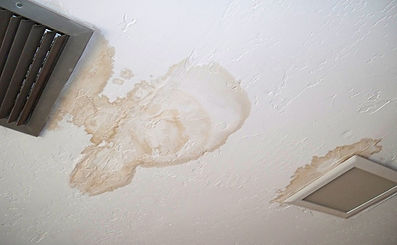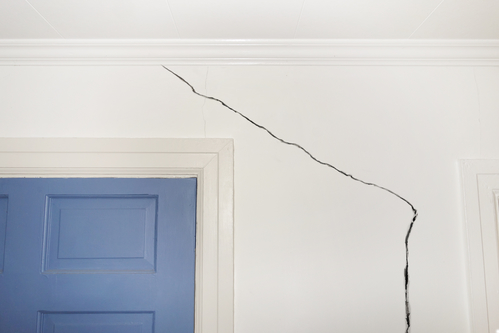In this article in the next paragraph you might get lots of superb help and advice with regards to How to Remove Water Stains from Walls and Ceilings.

Water discolorations on wall surfaces are not positive to the eyes. Your residence should lack discolorations on the wall surfaces, roofing system, or floors. That is the excellent state of a home and its structures. Yet, occasionally it appears nearly inevitable to experience water stains on walls in homes.
Homeowners living in moist areas regularly deal with the concern of water spots on wall surfaces. With precise and all-round details on the reasons of water spots and punctual fixing processes, you will constantly be an action in advance of such occurrences.
3 Typical Root Causes Of Water Discolorations on Wall Surfaces
As opposed to popular belief, water spots on wall surfaces do not always originate from bad structure materials. There are several sources of water stains on wall surfaces. These consist of:
Poor Drain
This will certainly avoid water from leaking into the wall surfaces. This web links to extreme moisture that you see on the wall surfaces of your structure.
The leading cause of wet wall surfaces, in this situation, can be a bad drainage system. It can additionally be because of poor monitoring of sewer pipes that go through the building.
Damp
When warm moist air meets dry cold air, it triggers water droplets to base on the walls of structures. This occurs in shower rooms and also kitchen areas when there is vapor from cooking or showers. The water droplets can discolor the surrounding walls in these parts of your house and spread to other locations.
Moist or condensation influences the roofing and also wall surfaces of buildings. When the wall is wet, it creates an ideal environment for the development of fungi and also microorganisms.
Pipe Leaks
A lot of houses have a network of water pipes within the walls. This ensures that the pipes are well away from the reach of harmful rats. It always enhances the stability of such pipes, as there is little oxygen within the wall surfaces. This prevents rust.
A drawback to this is that water leakage affects the wall surfaces of the structure and also causes extensive damages. A telltale sign of defective pipelines is the look of a water tarnish on the wall.
Water Discolorations on Wall: Repair Work Tips
Home owners would typically desire a quick fix when dealing with water spots. Yet, they would certainly soon understand this is counterproductive as the water discolorations persist. So, here are a couple of practical tips that will certainly lead you in the repair of water stains on walls:
Pro Pointer
A houseplant in your house additionally increases its humidity. So, if your house is currently moist, you might want to present houseplants with very little transpiration. An example of suitable houseplants is succulents.
Final thought
No one desires to have water spots on walls in their residence, it can take place to the finest of us. This short article gives you utilize, as you now recognize exactly how to handle this accident if it does take place.
It is constantly best to hire specialist solutions to help fix the damages in your house.
In some cases it appears virtually unpreventable to experience water stains on wall surfaces in homes.
In contrast to preferred belief, water discolorations on wall surfaces do not always stem from bad building materials. There are several causes of water discolorations on walls. The water droplets can tarnish the bordering walls in these parts of your residence and also spread to various other locations.
Right here are a couple of handy pointers that will certainly lead you in the repair service of water discolorations on wall surfaces:
CHECKING FOR WATER DAMAGE
Water damage can be costly, and it may begin before you even notice the first signs of trouble. Water damage can cause mold and mildew in your walls and floors, which can create an abundance of health concerns for your family. It can also lead to costly repairs of various appliances and general home fixtures. To avoid the pricey consequences of water damage, here are Warner Service’s top 5 places you should check:
The walls – The easiest place to spot the beginnings of water damage is on the walls and ceilings of your home. If water damage is present, there will most likely be water stains, especially around the windows and doorframes, and/or cracks in the drywall. If a stain looks unusual (discolored to brown, black or gray, raised texture), has a swollen appearance or is soft to the touch, contact a professional immediately. The pipes – To avoid water damage, consistently check the pipes in your kitchen (especially the dishwasher and ice maker), bathrooms, laundry room (specifically washing machines) and basement for corrosion, leaks and water stains. Pay special attention to where the pipes connect in your home and the location of caulking around the bathroom fixtures, including toilets, sinks, showers and tubs. Missing or loose caulking and grout could be signs of leaking water. This seepage can also quickly cause mold and rust, so double check your water heater and tank for wet spots on the floor. The floor – Water damage is very easy to spot on the floor. Look for any warping or buckling of the material, especially in the basement. If your home has wood flooring, look for bright white or dark stains. If your home has carpeting, keep it dry and clean. A damp carpet that smells of mold could cause water damage and health problems. To avoid this, consider installing floor pans under your appliances to help prevent damages from small, slow and undetected leaks. The basement and attic – If your basement or attic smells odd check for mold and mildew around the area, especially the valley where the roof meets. While you are inspecting those areas, check for wall cracks, floor stains, rust and dampness in the insulation. If you live in a colder and/or rainier climate, perform routine checks for water damage from melting snow or ice and rain. The exterior – Check the roof for damaged flashing and missing, cracked or curled shingles. There should also be no standing water anywhere outside your home. This could be caused by puddles, leaky rain gutters or hoses, poor drainage, or short gutter spouts. Invest in a sump pump system or water flow monitoring system, and perform routine maintenance on these outdoor appliances to avoid indoor water damage.

We hope you enjoyed reading our part about Water Stains on Walls. Thanks a lot for taking the time to read through our piece. Do you know anybody else who is interested in the subject? Be sure share it. I appreciate reading our article about How to Remove Water Stains from Walls and Ceilings.
Prioritize plumbing safety.